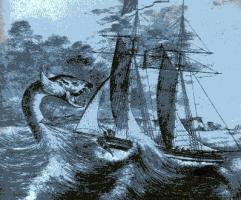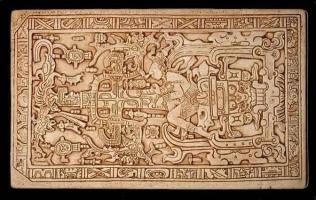Copy Link
Add to Bookmark
Report
dictyNews Volume 20 Number 04

Dicty News
Electronic Edition
Volume 20, number 4
March 15, 2003
Please submit abstracts of your papers as soon as they have been
accepted for publication by sending them to dicty@northwestern.edu.
Back issues of Dicty-News, the Dicty Reference database and other
useful information is available at DictyBase--http://dictybase.org.
=============
Abstracts
=============
Unexpected roles of a Dictyostelium homologue of eukaryotic EF-2 in growth
and differentiation
Sohsuke Watanabe, Kohji Sakurai, Aiko Amagai and Yasuo Maeda* Department
of Developmental Biology and Neuroscience, Graduate School of Life
Sciences, Tohoku University, Sendai 980-8578, Japan
*Author for correspondence (e-mail: ymaeda@mail.cc.tohoku.ac.jp)
J. Cell Sci. (in press)
Summary
EF-2 is believed to be indispensable for polypeptide chain elongation in
protein synthesis, and therefore for cell proliferation. Surprisingly,
we could isolate ef2 null cells from Dictyostelium discoideum which
exhibited almost normal growth and protein synthesis, suggesting the
existence of another molecule capable of compensating for EF-2 function.
The knock-out of Dictyostelium EF-2 (Dd-EF2H; 101 kDa phosphoprotein)
impairs cytokinesis , resulting in formation of multinucleate cells. The
initiation of differentiation including the acquisition of aggregation-
competence was delayed in Dd-ef2 null cells compared to wild-type. In
contrast, Dd-ef2 overexpression enhanced the progression of
differentiation, thus indicating a positive involvement of Dd-EF2H in
growth/differentiation transition.
----------------------------------------------------------------------------
A linear dominance hierarchy among clones in chimeras of the social
amoeba, Dictyostelium discoideum.
Angelo Fortunato, David C. Queller, & Joan E. Strassmann
Department of Ecology and Evolutionary Biology, Rice University, PO
Box 1892, Houston, Texas, 77251-1892, USA
Journal of Evolutionary Biology, in press
Abstract
Amoebae from different clones of Dictyostelium discoideum aggregate into
a common slug, which migrates towards light for dispersal, then forms a
fruiting body consisting of a somatic, dead stalk, holding up a head of
living spores. Contributions of two clones in a chimera to spore and
stalk are often unequal, with one clone taking advantage of the other's
stalk contribution. To determine whether there was a hierarchy of
exploitation among clones, we competed all possible pairs among seven
clones and measured their relative representation in the prespore and
prestalk stage and in the final spore stage. We found a clear linear
hierarchy at the final spore stage, but not at earlier stages. These
results suggest that there is either a single principal mechanism or
additive effects for differential contribution to the spore, and that
it involves more than spore/stalk competition.
----------------------------------------------------------------------------
[End Dicty News, volume 20, number 4]


















